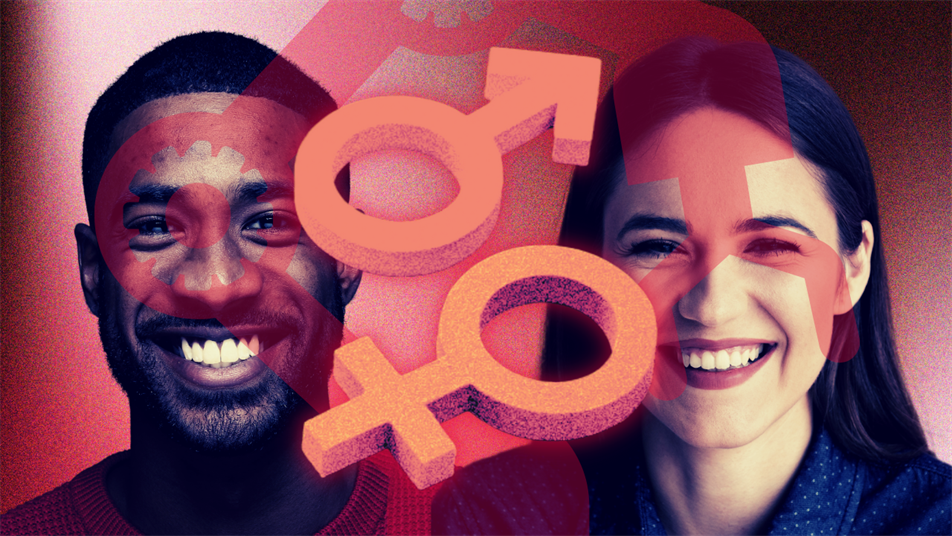How automation can help us to challenge gender assumptions and stereotypes

Amy Wright, Head of Strategy at Automated Creative, looks at what her team has learned from large-scale analysis of data across global campaigns.
Decades of advances in women’s rights are being rolled back. The United Nations Secretary General António Guterres has warned that the world is hundreds of years from achieving gender equality. Women and girls have been “erased from public life” in Afghanistan and sexual and reproductive rights are in peril on a large scale.
Against all this, the fact that men outnumber women by two to one in the tech industry – and by five to one in the field of artificial intelligence – might seem like (comparatively) minor problems. Problems to fix, of course, but maybe not the first ones on the list.
And yet, with the passing of another International Women’s Day, we need to remind ourselves of the immense potential of digital transformation to accelerate gender equality and women’s empowerment, and of the risks of amplifying existing patterns of inequality if we follow outdated patterns of thinking.
This is something we rediscover daily in our work. As we explore consumers’ strongest emotional triggers in advertising creative, we create hundreds of new ads at speed and scale, using data, automation and human creativity. In this way, we help brands understand what their customers are really passionate about and provide them with deep and rich insights into which strategies, visuals and messaging they might use.
Our automation tech analyses and tests thousands of unique creative display formats, and our results include a gender split. And very often, what we discover is not what you would expect.
We love busting myths. For instance, working with our client, global consumer goods company Reckitt, we uncovered data that showed surprising and gender-norm-challenging results on behalf of infant formula brand Enfamil.
The forward-thinking team at Reckitt was on a mission to shift business to a consumer-first model, seeking partners and processes that would dramatically improve content, relevance and performance. So we used automation to improve ad performance and provide consumer insights that could challenge existing ways of thinking and, in turn, improve marketing performance.
Our work with this client led to particularly strong examples of the need to challenge the status quo; including assumptions around gender. As we tested ad creatives, drilling down into visual and emotional triggers, tone of voice and format, for instance, we proved even ourselves wrong.
By way of example, we found that images of dads work better for Enfamil than mums when it comes to impactful creative – leading to a dramatic increase in conversion. Previously, there had been a general assumption that there was no need to include dads in the marketing collateral – who needs dads? – but this assumption had never been tested and, in practice, it was wrong.
This is just one example of the way technology can challenge our thinking, which, in advertising, has very often been conditioned by the fallible instincts, the gut feel, of creatives and strategists. Among the things we found was that groups respond very differently in English-speaking versus French-speaking regions of Canada – the former are far more inclined towards rewards and discounts, it transpires. Whose gut feeling tipped them off about that one?
Clearly, AI-driven marketing, driven by the latest technologies, can allow us to rethink our approaches and champion new ways of doing things. The other benefit of scaling creative volume with automation is that we can explore themes that would be lost on the cutting room floor if a brand was only running one big bet. We can show greater diversity and range, and champion more marginalised groups with their own tailored messaging and approach, learning more about their unique wants and needs – as well as bringing diversity into the mainstream. And very often, consumer insights, efficiency and effectiveness go hand in hand.
Meanwhile, data never stops. Ongoing analysis allows us – daily, if not in real time – to stumble on totally new insights that can be transformational.
Fortunately, Reckitt’s decision to use automated ads to power digital advertising performance and to remove assumptions and bias is not a lone success story. The tech exists today to report back on every component of an ad. Automation and human creativity, working together, can enable a smarter way to target and communicate effectively – anonymised and privacy-compliant, but generating myriad unexplored creative opportunities.
Crucially, it can also help us shift ingrained bias and misconception. There is no better time to have celebrated that than around International Women’s Day.
Also published in: PMW



